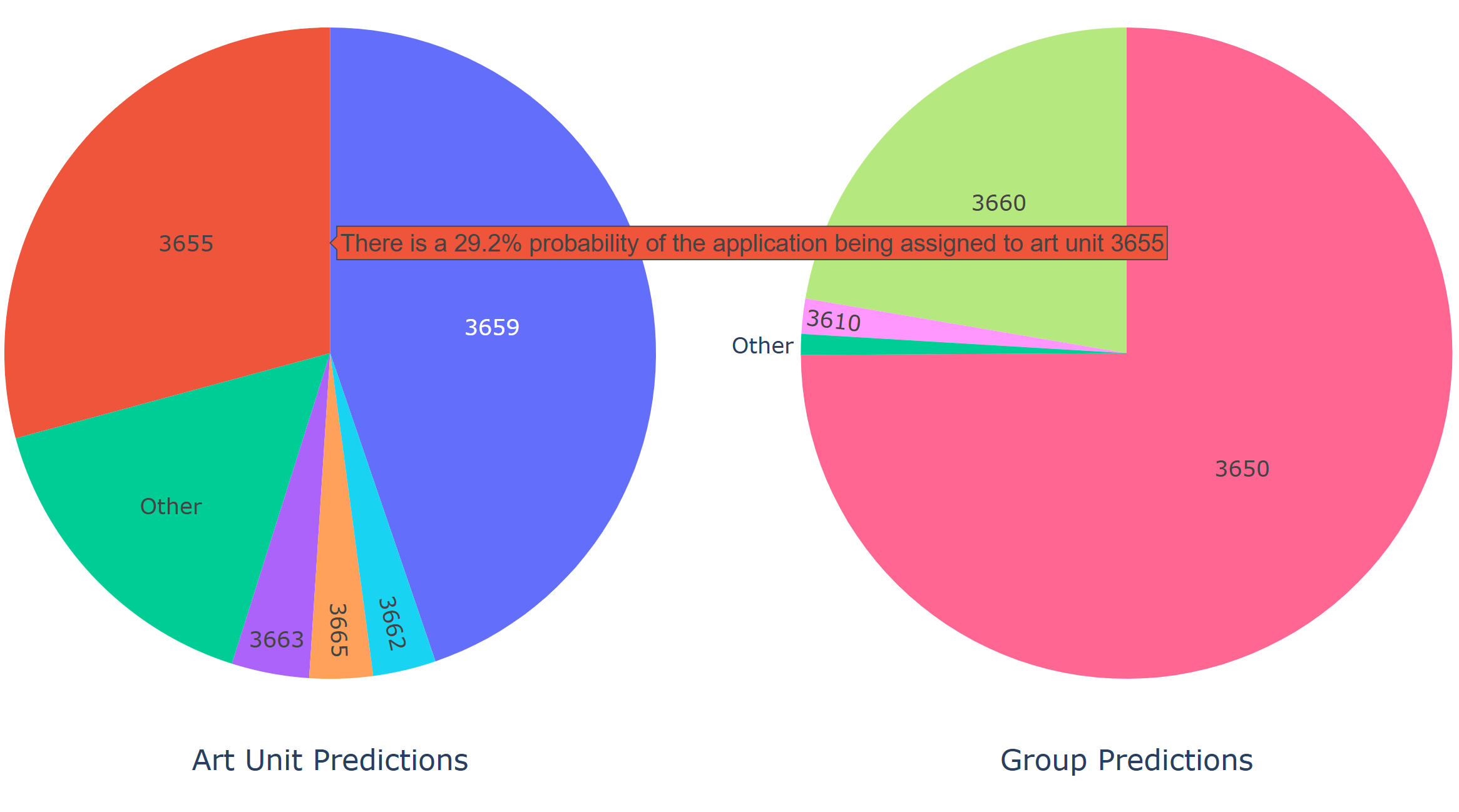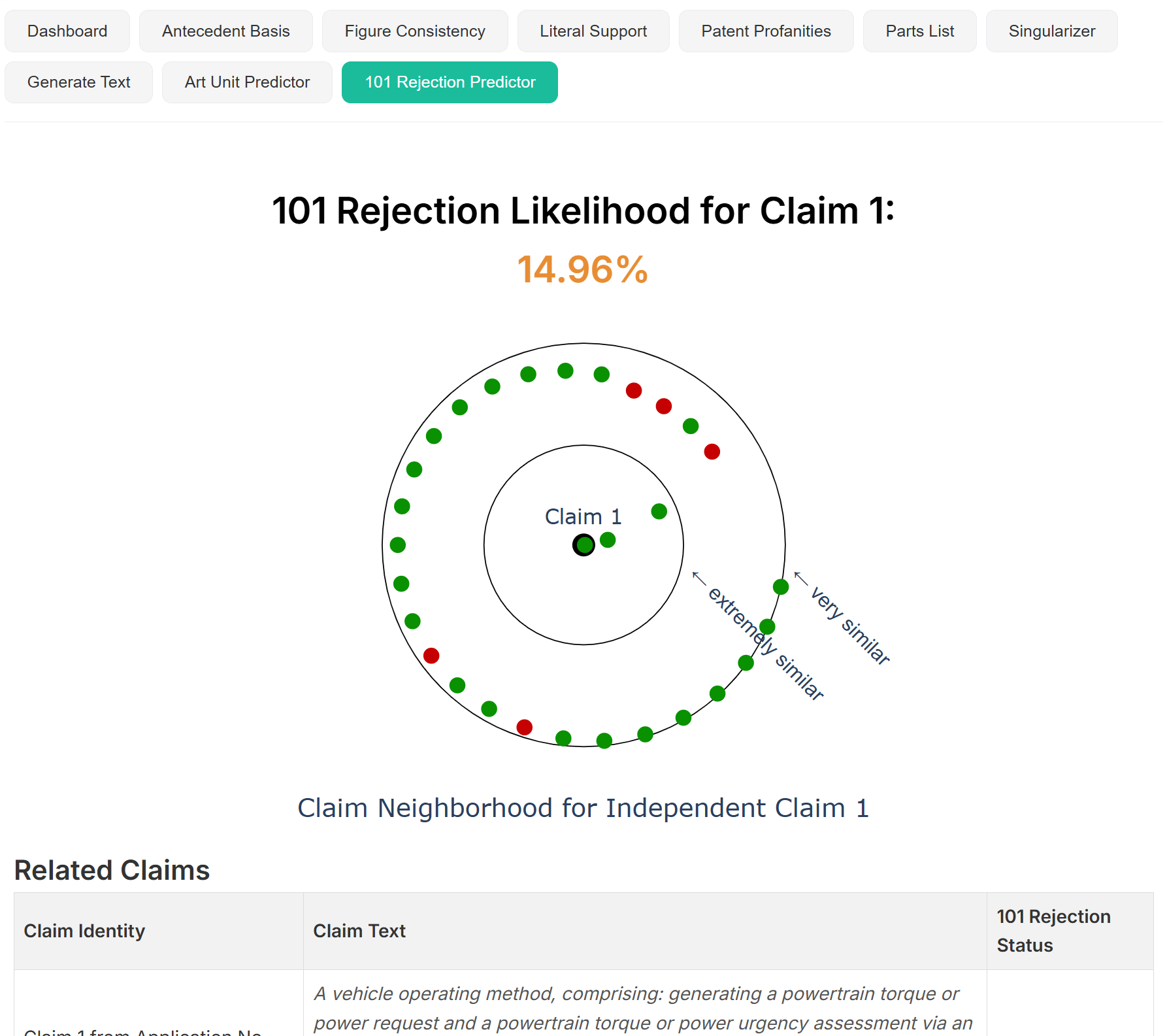Take the Guesswork Out of Patent Strategy
Leverage advanced machine learning to predict art unit assignments and assess 101 rejection risk before filing. Make informed, data-driven decisions that increase your chances of success and optimize your prosecution strategy.

